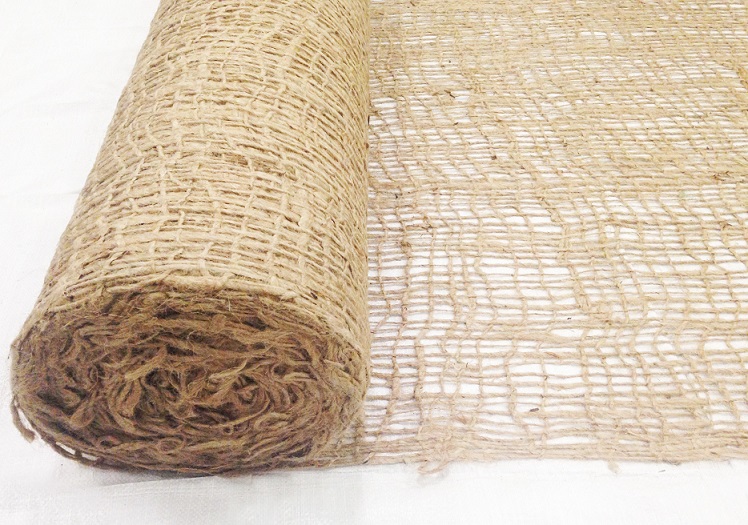- July 12, 2024
- Posted by: wellcoindustries
- Categories: Erosion Control, Jute Mesh
Introduction
Erosion control is a critical aspect of environmental management, especially in areas prone to soil degradation and water runoff. One of the most effective and eco-friendly solutions for this issue is jute bean netting. This natural fiber material has gained popularity for its ability to stabilize soil and support vegetation growth, making it an essential tool in sustainable landscaping and construction projects.

What is Jute Bean Netting?
Jute bean netting is a biodegradable material made from jute fibers, specifically designed for erosion control. Its mesh-like structure helps to hold the soil in place while allowing water and nutrients to permeate, supporting healthy plant growth. As an eco-friendly alternative to synthetic materials, jute bean netting decomposes naturally over time, enriching the soil with organic matter.
Benefits of Jute Bean Netting in Erosion Control
- Soil Stabilization: Jute bean netting effectively holds soil particles together, preventing erosion caused by wind and water runoff. This helps maintain the integrity of the landscape and prevents the loss of valuable topsoil.
- Water Retention: The natural fibers of jute bean netting absorb and retain moisture, promoting a healthy environment for seed germination and plant growth. This is particularly beneficial in arid and semi-arid regions where water conservation is crucial.
- Slope Stabilization: When used on slopes, jute bean netting provides additional support to prevent landslides and soil erosion. It helps in maintaining the slope’s stability while allowing vegetation to establish roots and grow.
- Vegetation Support: Jute bean netting creates an ideal microenvironment for seeds and young plants. It protects them from harsh weather conditions and pests, ensuring better survival rates and faster growth.
Applications of Jute Bean Netting
- Construction Sites: Jute bean netting is widely used in construction sites to control erosion and manage sediment. It helps in maintaining site cleanliness and preventing soil from being washed away during heavy rains.
- Landscaping and Gardening: In landscaping projects, jute bean netting is used to stabilize newly planted areas, prevent soil erosion, and support the growth of grass and other vegetation.
- Roadside and Highway Projects: Jute bean netting is employed in roadside and highway projects to control erosion on embankments and slopes. It helps in maintaining the structural integrity of the roads and preventing landslides.
- Coastal and Riverbank Protection: In coastal and riverbank areas, jute bean netting helps in stabilizing the soil and preventing erosion caused by waves and water currents. It supports the growth of vegetation, which further strengthens the shoreline.
How to Install Jute Bean Netting
- Prepare the Area: Clear the area of any debris and level the soil surface. If necessary, add topsoil to improve soil quality.
- Lay the Netting: Unroll the jute bean netting over the prepared area, ensuring it covers the entire surface. Overlap the edges of the netting to prevent gaps.
- Secure the Netting: Use biodegradable stakes or pins to secure the netting to the ground. Place the stakes at regular intervals along the edges and center of the netting.
- Plant Seeds: If using the netting for vegetation support, spread seeds evenly over the netting and lightly cover them with soil.
- Water the Area: Water the area thoroughly to help the netting settle and support seed germination.
Conclusion
Jute bean netting is a versatile and eco-friendly solution for effective erosion control. Its benefits, including soil stabilization, water retention, slope stabilization, and vegetation support, make it an ideal choice for various applications. By incorporating jute bean netting into your erosion control strategy, you can contribute to sustainable landscaping and environmental conservation. Consider using jute bean netting for your next project and experience the difference it makes in maintaining soil health and preventing erosion.
